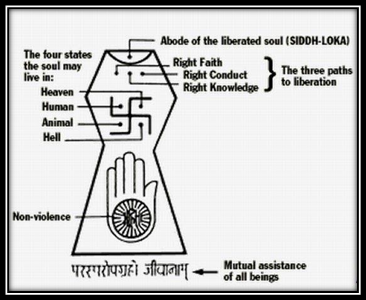

14th April 2022 (6 Topics)
Context
Mahavir Jayanti, the birth anniversary of the 24th and the last Jain Tirthankar Bhagwan Mahavir is being celebrated across the country.
About
About Mahavir Jayanti:
- Mahavir Jayanti is considered to be one of the most auspicious events for the Jain community and holds a lot of importance in their religious life.
- Lord Mahavir was born on the thirteenth day of rising moon of Chaitra month, 599 B.C. in the state of Bihar, India.
- This day falls in the month of April as per English calendar.
- His birthday is celebrated as Mahavir Jayanti day.
- This festival is celebrated widely by the Jain community in memory of the last spiritual teacher of the religion.
- A procession is called with the idol of Lord Mahavira called the Rath Yatra.
- Reciting stavans or Jain prayers, statues of the lord are given a ceremonial bath called
Jain Philosophy:
- According to Jain philosophy, all Tirthankaras were human beings but they have attained a state of perfection or enlightenment through meditation and self-realization.
- They are the Gods of Jains. The concept of God as a creator, protector, and destroyer of the universe does not exist in Jainism.
- Also the idea of God's reincarnation as a human being to destroy the demons is not accepted in Jainism.
|
The Jain Symbol
|
About Mahavir:
- Mahavir was a prince and was given the name Vardhaman by his parents.
- Being son of a king, he had many worldly pleasures, comforts, and services at his command.
- But at the age of thirty, he left his family and royal household, gave up his worldly possessions, and become a monk in search of a solution to eliminate pain, sorrow, and sufferings.
- Mahavir spent the next twelve and half years in deep silence and meditation to conquer his desires, feelings, and attachments.
- Mahavir spent the next thirty years travelling on bare foot around India preaching to the people the eternal truth he realized.
- The ultimate objective of his teaching is how one can attain total freedom from the cycle of birth, life, pain, misery, and death, and achieve the permanent blissful state of one's self.
- This is also known as liberation, nirvana, absolute freedom, or Moksha.
Teachings of Mahavir:
- Lord Mahavira taught renunciation and restraint, love and compassion and modesty and righteousness as the basis to lead a balanced human life.
- Mahavir preached that right faith (samyak darshana), right knowledge (samyak jnana), and right conduct (samyak charitra) together is the real path to attain the liberation from karmic matter of one's self.
- At the heart of right conduct for Jains lie the five great vows:
-
- Nonviolence (Ahimsa) - not to cause harm to any living beings
- Truthfulness (Satya) - to speak the harmless truth only
- Non-stealing (Asetya) - not to take anything not properly given
- Chastity (Brahmacharya) - not to indulge in sensual pleasure
- Non-possession/Non-attachment (Aparigraha) - complete detachment from people, places, and material things
- His philosophy of ‘Anekantavad’ signifies India’s civilizational values of plurality and tolerance.
- Lord Mahavir's sermons were orally compiled in Agam Sutras by his immediate disciples.
- These Agam Sutras were orally passed on to the future generations.
- In course of time many of the Agam Sutras have been lost, destroyed, and some are modified.
- About one thousand years later the Agam Sutras were recorded on Tadpatris (leafy paper that was used in those days to preserve records for future references).
- Swetambar Jains have accepted these Sutras as authentic versions of His teachings while Digambar Jains did not accepted as authentic.


